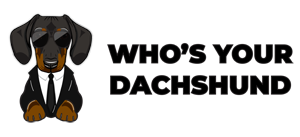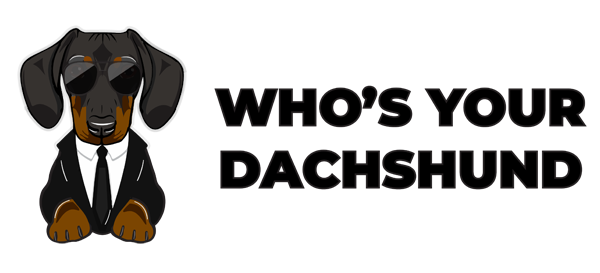
Dachshunds do have webbed paws. It is one of the distinguishing factors between Dachshunds and other breeds. In addition to having webbed feet, Dachshunds also have a very long body structure. They have short, stubby legs, which allow them to squeeze into tight spaces during their hunting excursions. They can do this because of their very short legs and thin bodies. Despite these attributes, these dogs are still regarded as an old breed despite their popularity. Since the sixteenth century, they had existed when hunters first used them for hunting smaller vermin, like badgers and foxes. Before their use in hunting, they were also bred to be used for tracking and slaying European rabbits.
Their acute sense of smell is one of their best attributes that allows them to locate prey in dark or enclosed spaces. In addition to using them for hunting purposes, they are also popular dog breeds used as pets. That has made them a popular choice in many households. Dachshunds must have a good diet when growing up because it will help determine their size and shape later on when they have matured.
Contents
- Definition of Dachshund Webbed Feet
- Dachshund Webbed Foot Genetics
- What is the Cause of Dachshund Webbed Feet?
- How Dachshunds Walk with Webbed Feet?
- How Do You Deal With Dachshund Webbed Feet?
- What is the Prognosis for Dachshund Webbed Feet?
- 9 Things You Can Do to Prevent or Minimize Webbing Between Your Dog’s Paws
- Pros and cons of Dachshund Webbed Feet
- Knowledge and information about Dachshund Webbed Feet
- Conclusion on Dachshund Webbed Feet
Definition of Dachshund Webbed Feet
Webbed feet are not just limited to ducks but also come in dogs’ form. Dogs have a natural tendency to curl up into a ball and would be better off with webbed feet. They would walk on uneven terrain, which they might find themselves infrequently.
Dachshunds are well equipped to handle uneven terrain. They can run sideways over minor obstacles just as efficiently as straight ahead. That makes them practical for running water rescue missions over rocky terrain or through steep alpine passes where other dogs would struggle with getting stuck.
Dachshund Webbed Foot Genetics
Dachshunds are known to have long bodies and stubby legs. They also have webbed feet, which is an unusual trait not seen in many other dog breeds. The German word for them is “Dachshund,” or badger dog. Their feet make the body and legs appear short and stubby, which is a bit of an optical illusion. The breed standard was developed to hunt badgers that live in caves, so the body is long and thin, but the legs are short.
The webbed feet help these dogs have a better grip on loose dirt and earth and enable them to dig more quickly through hard ground. They help with swimming, making sense since they were bred hunting dogs to pursue prey into water-filled holes and tunnels.
What is the Cause of Dachshund Webbed Feet?
Dachshunds are known for their unusual body shape and short legs. That is because of a defective gene that shortens the legs’ long bones. The dog has a characteristic appearance, with its long back legs and short front legs. The webbed feet are on the feet of the dog. The feet’ webbing is controlled by a wire-like bone called sesamoid bone, which swells when pressure is applied. These swelling causes were swelling comparable to that of a person’s fingers.
How Dachshunds Walk with Webbed Feet?
The Dachshund has long back legs, short front legs and should have four paws, but for breeders who breed for better appearance, only one or two front paws are present in Dachshunds. An accident or another cause may have caused both or one rear paw to be removed or damaged as pups. The Dachshund has a short straight tail that is carried high. Due to the build-up of sesamoid bones, its paws are webbed. They can also be dewclaws that have been removed or are missing for some other reason. The dog walks in a crouching position and balances its body by placing all four paws on the ground with webbing.
How Do You Deal With Dachshund Webbed Feet?
The webbed Dachshund feet are a prevalent problem for Dachshund owners. Webbing can be lessened by trimming the dog’s nails. If trimming does not work, or the webbing is thick and not easily amendable, the next step is to try a “Sock for Dogs” product. These products slide over your dog’s feet and then connect to your leash. That gives you control if your Dachshund tries to escape from you during activity.
You will also want to take preventative measures for accurate Dachshund shoe design using custom-made waterproof boots or booties. Although the amount of webbing between the toes is minor, Dachshunds with webbed feet can suffer from many health issues that affect your dog’s quality of life.
What is the Prognosis for Dachshund Webbed Feet?
A prognosis is a prediction of a disease’s outcome. Knowing the prognosis for your dog’s condition can help you prepare for possible outcomes and make treatment decisions.
Dogs with Dachshund webbed feet will generally have a good prognosis. In most cases, pups are born with the condition, which often improves as the dog ages. Suppose there are complications or symptoms of discomfort. In that case, your veterinarian may recommend surgical correction or medication to relieve pain and inflammation.
There are many signs that you should watch for that may show a problem with your dog’s Dachshund webbed feet:
1. Sores on the footpads from walking on rough ground, licking or chewing at paws, or having them stepped on by other dogs.
2. Limping or pain when walking
3. Excessive licking at footpads, often with hair loss in this area
4. Lameness in one leg while the other seems to be ok, (often after a change in weather)
5. Swelling in the joints, especially the hocks
6. Swelling around the eyes or face, which can be a sign of eye disease or glaucoma
7. Dull outer coat and dull colors are not typical for the breed. They can result from liver disease or copper toxicosis.
8. Inactivity (or refusal to move) after being active is a serious sign that your dog may have an injured foot, leg, or back
The Dachshund webbed feet are so popular nowadays that people make them wear shoes to protect against cold weather and snowstorms. They also wear boots to protect them from getting injured.
9 Things You Can Do to Prevent or Minimize Webbing Between Your Dog’s Paws
Keep your dog’s nails trimmed.
The best way to keep your dog’s nails trimmed is to brush them every day. It will help with any clumping or mats and help remove dirt and debris from the nails. Be careful not to trim too short, though, because you want the nails to be long enough that your dog can easily walk, but not so long that they get caught on objects or damage furniture.
Keep your dog’s paws dry at all times.
If dogs don’t have dry paws, they will tend to carry a lot of water in their pads which transmit to the pink skin, and the dog will have wet feet. It will also make the skin thicker, linked to some medical problems. So keep them dry at all times by hosing them down occasionally or by using a paw mud after a bath and before bedtime.
Make sure you’re getting enough exercise for your pup.
If your dog isn’t getting enough exercise, they may avoid getting into the water and dry areas, or they might chew on objects in the house. To make sure you’re providing your pup with enough exercise, try to incorporate daily walks into your regular schedule. If you’re not able to take them out during the day, try to at least take them outside once an hour during nesting season.
Try not to tie them up for prolonged periods.
To help prevent sores on your dog’s pads from forming, do not tie them up for long periods or leave them tied up for extended periods, such as overnight. To avoid mats developing underneath their paws, you should also keep your dog’s bedding out of the way of the feet. You can also make your pup more comfortable by giving them a lift so that they aren’t trying to move in the water.
Please give them a paw of mud after they get out of the water or after a bath.
You can give your dog a paw of mud during the dry to help keep the pads hydrated and prevent them from becoming painful and irritated. Ensure to verify with your vet before using this for any dogs with hydration issues, such as older dogs, pups, and sick dogs, because high doses may cause diarrhea.
Please keep your dog out of the water for a while before going to the beach.
If you have an active Dachshund, try to plan and keep them away from the water’s edge during high tide. Timing is crucial, though, because if too much time passes between when your dog gets in the water and dry up, it can cause significant damage to its paws. If they end up in the water for too long, be sure to bring them out immediately and check their paws to make sure there isn’t any damage.
Try not to encourage your Doxies’ natural digging instincts.
If you have a Dachshund that loves to dig, plant a dog-safe flower or shrub in their favorite digging area so that they can fuel their need to dig, but acceptably and more safely. To prevent it from digging in areas where they shouldn’t, consider adding landscaping materials like rocks and natural materials to their digging area. You can also make them more comfortable by giving them a lift to move in the water.
Be sure your pup is comfortable walking around barefoot on hard surfaces.
Suppose your Dachshund is used to walking around barefoot on hard surfaces. In that case, you may need to work on acclimating them to the new surface as a form of exercise for some time. You can accomplish this by giving them a walk around the house to walk without shoes. Only once they’ve adjusted will you slowly transition to walking outside with shoes. You may also need to consider buying some plastic or rubber dog shoes if they are willing.
Consider a pedicure for German Wire-haired Pointer.
However, pedicure options are more expensive than regular nail trimming so that your pup doesn’t slip on hard surfaces or end up in the water, which can cause injuries. As with regular nail trimming, make sure you are getting regular, yearly pedicures.
Dog owners often wonder, “Why does Wirehaired Pointer have webbed toes?” The answer is that webbed toes allow the animals to move when swimming in cold waters or running on very muddy terrain or wet. Their paws are stuck in ice or snow.
Pros and cons of Dachshund Webbed Feet
Dachshunds are famous for their unusual webbed feet. It’s a great conversation starter, but it doesn’t come without its downsides.
Pros:
- Webbed feet are adorable, and it’s funny to watch them swim.
- People are envious of their abilities.
- Webbed feet allow Dachshunds to stick to slippery surfaces, making it harder for a predator to get a hold of them, especially in the water.
- Webbed feet can help them stay warm in the winter by adding another fur layer.
- Webbed feet make it easier for dogs to move on the wet ground, which gives them an edge when going after prey, such as rats and rabbits.
Cons:
- Webbed feet might make Dachshunds more susceptible to conditions such as arthritis and infections that can cause lameness or pain when a Dachshund is older.
- Webbed feet can make it very difficult to move around when a Dachshund is younger.
- The harsh, uneven surface of a webbed foot makes them too abrasive and too heavy for the cartilage in a Dachshund’s joints to handle. If the cartilage has a hard time holding up, bone growth will be slower, which means more joint problems.
- Dogs with webbed feet can have trouble finding the ‘perfect place to ‘settle’ because their bodies have so much texture, and they are so different from one another.
- Lots of Dachshunds are born without webbed feet.
- Regardless, webbed feet are great conversation starters, and they get lots of attention.
Knowledge and information about Dachshund Webbed Feet:
The webbing between a Doxie’s toes is a lot more flexible than the webbing on their paddle paws. This flexibility allows them to stretch their toes longer or shorter as needed. A Dachshund’s paws are also huge in comparison to the elongated body weight, and this is a trait that extends back to the 17th century. The ears only come up when they listen intently to something or track down a scent that they’re trying to follow. The unique ‘thumb’ of the front paws assists in this tracking because it can reach almost the ground.
They had webbed feet history since their ancestors’ werewolf hybrids from Germany were bred as working dogs. These dogs’ sizes have rough, thick double coats that would be impervious to water and other obstacles they would encounter in the wild. Their rugged, waterproof coats also made them effective hunters and trackers as their toe pads offered full traction in all directions on slippery surfaces.
Summary on Dachshund Webbed Feet
Dachshunds are genetically predisposed to having “webbed” feet. The reason is an underdeveloped ligament that is supposed to stretch the toes. It can create problems for the dog, especially in the winter months, as a dog having “webbed” feet can have difficulty walking on snow and ice.
Dachshund dogs breed dogs that are well-known as excellent swimmers for having webbed feet. What is less well-known is that they also have another condition called “hanging” or “suspensory” patellas. The patella is the knee cap of a dog, which usually moves up and down in sync with the leg’s motion as it walks. However, in dogs with hanging patellas, the knee cap will be located more towards the leg inside than it should be.

